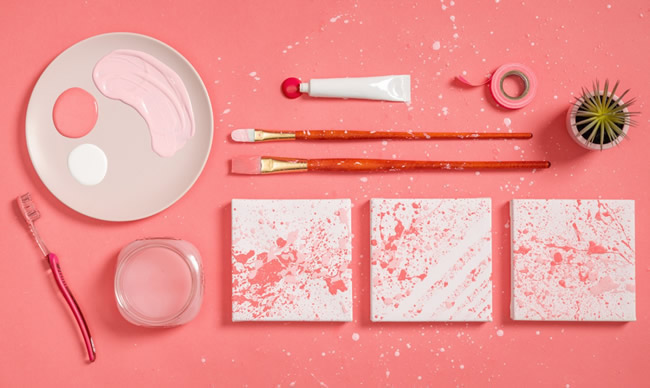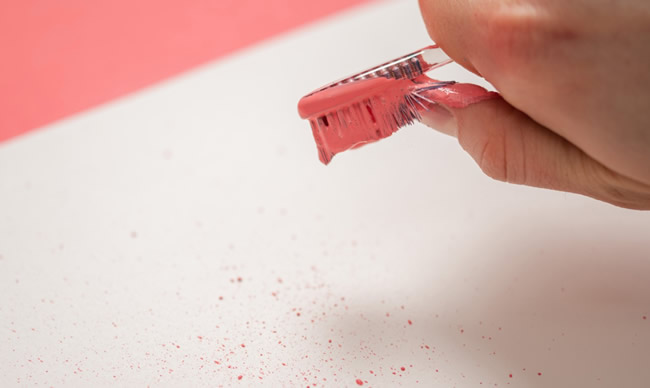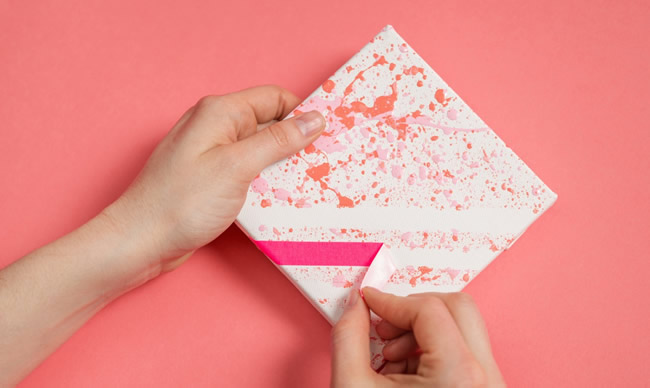
Splatter painting, the technique made famous by Jackson Pollock, is energetic, unpredictable and a whole lot of fun. It's also a lot harder than it looks.
But it can be done! There are three common splatter-painting methods that will help you add abstract expressionist style to your art, and it can be done with either acrylics or watercolors. Be warned: things will get messy. You’ll want to wear your designated painting clothes and move away any objects you want to keep clean — you never know where the pigment will fly!
Use When: you want to cover a large surface with splatter paint.

Fill the bristles of a paint brush with pigment. Then gently tap it with a second brush (or stick, or even your fingers) with your opposite hand. This will give the paint enough force to travel across your canvas.
Use When: you want to cover smaller areas and have smaller flecks of splatter paint.

Fill the bristles of a toothbrush (or a stiff-bristled brush) with pigment. Hold it at a downward angle, so the bristles are pointed toward the ground. With your opposite hand, run your fingers along the edge of the brush; you may want to put on gloves first. Go slowly and pull the bristles back so they launch paint onto the canvas.
Use When: you want to control exactly where your splatter paint falls.

Control is a big challenge when splattering paint, and a stencil can help! It can be complex or simple (even as simple as a strip of masking tape), but make sure there’s plenty of positive space around it so the extra paint won’t get on your canvas.
